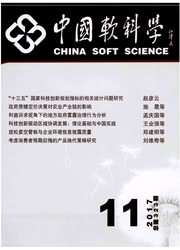

 中文摘要:
中文摘要:
本文利用世界投入产出表(WIOD)基于附加值贸易框架,测算了1995—2011年中国服务业整体及不同要素密集度类型服务业进口的国别(地区)结构,并与传统总值核算方法进行了对比分析,且考察了不同国家(地区)服务业附加值贸易与服务贸易及货物贸易的关系。研究结果显示:(1)中国服务业进口来源国是以美日为主的发达国家,不同类型服务业的进口来源国差异较大,且两种核算方式下发达国家内部结构和不同类型服务业进口来源国结构均存在着显著差异;(2)总体而言,通过货物进口引致的间接服务附加值进口要略大于通过服务进口带来直接服务附加值进口;劳动密集型和资本密集型服务业附加值进口主要通过货物进口间接实现,而知识技术密集型服务业进口主要通过服务进口直接实现。对此,中国应发挥政府的引导作用,通过扶持知识技术密集型先进制造业和扩大制造企业的服务需求来加大服务进口溢出效应的扩散力度,并通过扩大进口服务类型和货物服务进口来源国来适当扩大服务进口复杂度和货物进口复杂度,促进中国制造业转型升级和全球竞争力的提高。
 英文摘要:
英文摘要:
Abstract: From the perspective of" added value trade, This paper used the input-output table (WIOD) to estimate the import country (region) structure of Chinese services overall and different factor intensive type services during 1995 to 2011 years, and comparing with the traditional GDP accounting method. And discussed the relationship between value- added in trade of services and services trade, goods trade. The research results showed that, the source country or region of services importation inChinaisis dominated by the developed countries as US and Japan, and the source country or region of services importation hold great difference amongdifferent types of services. And there is a significant difference of the internal structure of the developed countries andthe source country structure of the different types ofservices importation. Moreover,the gross imports of goods and services and the per capita GDP have a positive impact on the value-added services imports from different countries. In this regard, China government should increase the intensity of the spillover effect of service import by supporting the knowledge and technology intensive advanced manufacturing industry and expand services demand of manufacturing enterprises, and expand the service trade import complexityby expanding the types of services importation and service import source countries, topromote the transformation and upgrading of China manufacturing and the increase of the global competitiveness .
 同期刊论文项目
同期刊论文项目
 同项目期刊论文
同项目期刊论文
 期刊信息
期刊信息
